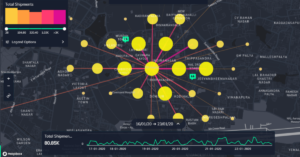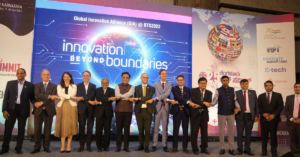Now is the time for both the organisations and employees to proceed with a growth mindset – learning, re-evaluating, upskilling, and reskilling to make sure they can keep up with this pace of change and be future-ready
Hybrid workplaces are increasingly investing in creating a strong employee value proposition to help attract and retain talent and analyse just how well their current talent strategies are working
Another focus in the new world of work is to bring together both human skills and digital skills to execute work processes seamlessly

“Never stop learning because life never stops teaching.” It’s a worn phrase, but it has particular relevance now more than ever. We have learned a lot over one year, yet there is much more to look forward to as we step into this new “hybrid workplace” in 2021.
Several companies are equipping themselves for this hybrid workplace. They are providing employees further flexibility, allowing them to work where they feel most productive and comfortable. The crisis has also given rise to the need for new learning opportunities for next-generation employees.
Therefore, now is the time for both the organisations and employees to proceed with a growth mindset – learning, re-evaluating, upskilling, and reskilling to make sure they can keep up with this pace of change and be future-ready.
According to the Conference Board, selecting, retaining, and developing talent have always been a top priority for many CEOs. Besides these, hybrid workplaces are increasingly investing in creating a strong employee value proposition to help attract and retain talent and analyze just how well their current talent strategies are working. Such workplaces further identify, secure, develop, and retain top-performers for their increased efficiency and bespoke skillset. Moreover, the CHRO has been thrust into the spotlight as the top expert on talent strategy, development, management, company culture, and employee experience.
Create Advanced Learning Opportunities
Further, foundational efforts such as nurturing power skills, manager training, and scaling learning globally will remain important. So, for instance, how are power skills relevant in today’s workplace? Let’s take the current scenario when most of the workforce is working in remote setups. Power skills can help employees work and communicate effectively in a virtual format, increase innovation and creativity, support strong decision−making skills, critical thinking capabilities, and empathy towards one’s team members or colleagues.
With a distributed workforce, a manager or leader will have to manage these teams to collaborate. Another focus in the new world of work is to bring together both human skills and digital skills to execute work processes seamlessly. Organisations need to provide a combination of learning styles and modes as businesses are transforming gradually. They need to take a multimodal approach, including Virtual Instructor-Led Training (VILT), micro-learning, and self-directed on-demand learning. So, from one learning style, individuals can now embrace a combination of learning techniques that will help one fit in at any workspace easily. As organizations continue to transform, it becomes imperative to continuously expand the variety of learning styles they offer to their employees. This creates an environment for continuous learning and knowledge sharing.
As with the continuation of remote workplaces, organizations are including virtual team challenges or training sessions on staying focused, stress management while working from home. For instance, organizations are conducting webinars talking about mental health and wellness or organising virtual games or chat sessions for employees over a cup of coffee on Friday evenings. Such sessions are helping employees, who are working from home for more than a year now, to unwind while keeping them motivated.
Provide Opportunities for Growth
Moreover, organizations that wish to retain their talent can help their employees with career planning. First, organizations can take the first step in understanding the employee’s personal goals and career aspirations. Further, they can help them understand the skills and the latest digital tools they need to possess or learn to excel in their careers. Plus, organizations must also provide learning opportunities to mobile-friendly employees and available for them whenever they have time to access it and in a way that is convenient for them to fuel their professional growth.
Besides, organisations must also create opportunities internally that include a promotion, a new assignment, or a lateral move. These will not only stretch an employee’s capabilities but also expand their career portfolio.
In conclusion, it is a commonly known fact that change is hard; change is often scary and divisive. But change is required for progress. So, as technology continues to advance, it is imperative next-generation learners equally understand the need to grow their learning with it. It’s essential for hybrid workplaces to fully tap into the potential and preferences of all learners who are part of the future workforce.










